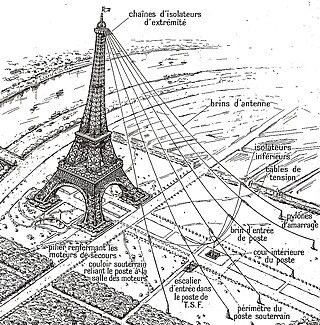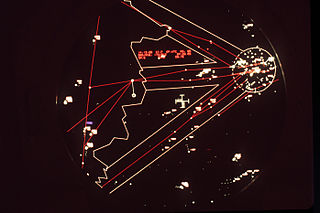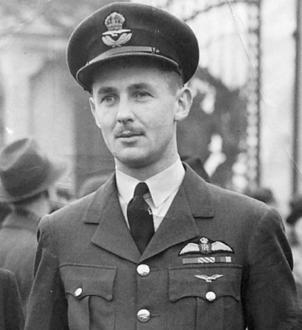Related Research Articles

Spandau is the westernmost of the 12 boroughs of Berlin, situated at the confluence of the Havel and Spree rivers and extending along the western bank of the Havel. It is the smallest borough by population, but the fourth largest by land area.

Royal Air Force Gatow, or more commonly RAF Gatow, was a British Royal Air Force station in the district of Gatow in south-western Berlin, west of the Havel river, in the borough of Spandau. It was the home for the only known operational use of flying boats in central Europe, and was later used for photographic reconnaissance missions by de Havilland Canada DHC-1 Chipmunks over East Germany. Part of the former airfield is now called General Steinhoff-Kaserne, and is home to the Luftwaffenmuseum der Bundeswehr, the German Air Force Museum.

Gatow, a district of south-western Berlin is located west of the Havelsee lake and has forested areas within its boundaries. It is within the borough of Spandau. On 31 December 2002, it had 5,532 inhabitants.

A radio listening station is a facility used for military reconnaissance, especially telecommunications reconnaissance by "intercepting" radio transmitter communications. In contrast to the original eavesdropping on an acoustic speech conversation, radio eavesdropping stations are used to eavesdrop on the information transmitted wirelessly using radio technology. For this purpose, highly sensitive radio receivers and suitable receiving antennas are used.

The British Commanders'-in-Chief Mission to the Soviet Forces in Germany (BRIXMIS) was a military liaison mission which operated behind the Iron Curtain in East Germany during the Cold War.

Kladow is the southernmost district of the Borough of Spandau in Berlin, Germany.

During the Cold War era (1945–1991), the West Berlin air corridors, also known as the Berlin corridors and control zone, were three regulated airways for civil and military air traffic of the Western Allies between West Berlin and West Germany passing over East Germany's territory. The corridors and control zone were physically centered on and under control of the all-Allied Berlin Air Safety Center (BASC) in West Berlin. The airspace within these corridors was used by US, UK and French-registered non-combat aircraft belonging to these countries' armed forces and airlines operated by pilots holding those countries' passports. In addition, it was also used by LOT Polish Airlines for regular scheduled services from Warsaw to London and Paris via Schönefeld Airport to the south of East Berlin.

The Militärhistorisches Museum der Bundeswehr – Flugplatz Berlin-Gatow, is the Berlin branch of the Bundeswehr Military History Museum. The museum acts as an independent military department.
This is a list of former and current airports located in and around Berlin, the capital of Germany.

The 1948 Gatow air disaster was a mid-air collision in the airspace above Berlin, Germany that occurred on 5 April, sparking an international incident. A British European Airways (BEA) Vickers VC.1B Viking airliner crashed near RAF Gatow air base, after it collided with a Soviet Air Force Yakovlev Yak-3 fighter aircraft. All ten passengers and four crew on board the Viking were killed, as was the Soviet pilot. The disaster resulted in a diplomatic standoff between the United Kingdom and United States on one hand, and the Soviet Union on the other, and intensified distrust leading up to the Berlin Blockade in the early years of the Cold War.

Spandau is a locality (Ortsteil) of Berlin in the homonymous borough (Bezirk) of Spandau. The historic city is situated, for the most part, on the western banks of the Havel river. As of 2020 the estimated population of Spandau was 39,653.

The Berlin Blockade was one of the first major international crises of the Cold War. During the multinational occupation of post–World War II Germany, the Soviet Union blocked the Western Allies' railway, road, and canal access to the sectors of Berlin under Western control. The Soviets offered to drop the blockade if the Western Allies withdrew the newly introduced Deutsche Mark from West Berlin.

The Berlin Infantry Brigade was a British Army brigade-sized garrison based in West Berlin during the Cold War. After the end of World War II, under the conditions of the Yalta and Potsdam agreements, the Allied forces occupied West Berlin. This occupation lasted throughout the Cold War. The French Army also had units in Berlin, called the French Forces in Berlin and the US Army's unit in Berlin was the Berlin Brigade.

Wolfgang Martini was a Career Officer in the German Air Force and largely responsible for promoting early radar development and utilization in that country.

John Hurry DSO, DFC, was a Royal Air Force officer who was one of the first pilots to join No. 83 Squadron of the Pathfinder Force, marking targets for British bombing attacks on Germany during the Second World War, and who later flew many sorties during the Berlin airlift.
Gottfried Schapper was a German listening specialist, before and during World War II. Schapper was an Signals intelligence officer, who was known for having the original idea for the Forschungsamt signal intelligence agency. Schapper had worked in the Reichswehr Ministry cipher bureau from 1927 to 1933, which would later form part of Luftwaffe signals intelligence unit, had been dissatisfied by both the scope of monitoring and intercept work and the incompetence of the methods employed there. He along with some colleagues, including the convinced Nazi, Hans Schimpf, proposed to Hermann Göring that a separate signals office be created that would be free from department ties.
Sergeant John Earl Staff was an American soldier. He was one of two known Allied soldiers killed in the line of duty on the border of West Berlin and East German territory between the beginning of the joint occupation of Berlin in summer 1945 and the beginning of the construction of the Berlin Wall on August 13, 1961.
The following is a hierarchical outline for the structure of the British Army in 1989. The most authoritative source for this type of information available is Ministry of Defence, Master Order of Battle, and United Kingdom Land Forces, HQ UKLF, UKLF ORBAT Review Action Plan, HQ UKLF, 1990.
The 4th Signal Group was a group sized unit of the Royal Corps of Signals within the British Army that supported the British Army of the Rhine. The group's main job was to supervise all of the static communications used by the British Forces in Germany. It supported the British Army of the Rhine and 2nd Allied Tactical Air Force for just under 30 years.
Sportclub Gatow Berlin is a German football club from the district of Gatow, Berlin. It was founded in 1931 as Gatower Sportverein. The club was lost in 1945 in the aftermath of World War II, but reemerged as Sportgruppe Gatow. It readopted its historical identity on 1 April 1949.
References
- 1 2 3 Nigel West (31 August 2012). Historical Dictionary of Signals Intelligence. Scarecrow Press. pp. 167–. ISBN 978-0-8108-7187-8.
- ↑ Matthias Heisig: "You Can't Miss Gatow" Die Geschichte eines Flugplatzes. Ed. by the Militärhistorisches Museum Flugplatz Berlin-Gatow, Berlin 2021, p. 96-100.